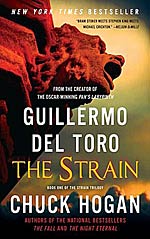
![]() SueCCCP
SueCCCP
1/1/2013
![]()
The story begins with a young Abraham listening to his grandmother as she relates the story of the local bogeyman, Sardu, so we know that the mysteriously dead aircraft must have some connection to this old terror. At first, we have no idea what exactly this terror is, but the feelings of the first responders make us uneasy and anxious as more details of the aircraft and its contents are revealed. One aspect of the book that I really liked is that it does not restrict itself to a limited number of viewpoints. We may follow a character for only a single scene, but that view from their perspective allows us to experience their reactions to the events and expands our own view of what occurs. This feels very cinematic to me, and allows us to follow the various characters that are going to become important later in the book, much as many successful disaster movies weave a series of stories together until the final group of survivors is revealed.
Eph is a strong leading man, although I am not sure that he needed to be going through a messy divorce and fighting for child custody, which I felt detracted from the story a little. He has his faults, but has the strength to believe the evidence of his own eyes and to take the leap of faith needed for him to trust Abraham. Professor Setrakian is the standard mentor and source of all knowledge that is typical of many horror stories, but he has an interesting and terrifying back-story, which would be scary enough without the addition of the ‘strigoi’ as he calls Sardu. His experiences in the concentration camp are moving and a reminder that not all monsters are supernatural. The other standout characters are Gus, the recently released, small-time, gang thief and Vasiliy Fet, the expert rat catcher. Both of these men are inadvertently connected to Sardu’s arrival in New York, and their personal journeys show us how the general public is responding to the strange events and how vermin can be a useful indicator of things going very wrong.
This brings me to one point that I found especially gratifying about this book: it does not deviate massively from scientific possibilities. Although the vampires are presented as displaying many traits that we normally associate with zombies, they are not magical or supernatural in the traditional sense. They are actually the product of an alien infestation, and we are given a lot of detail about how the human body is affected by the invading organism. There is also a history behind them, so that we do not have to accept that they have spontaneously arisen from nothing, as we see in so many zombie stories. Indeed, we learn that they have been preying upon us for many centuries, and that the greed and arrogance of a single human is actually responsible for this present disaster.
This is most definitely an unsettling and disturbing book, and there will be scenes that some people find difficult to read. This is not because there is a huge amount of ‘gore porn’, but rather because they place normal people in the most terrible situations. For me, the most difficult section involves one of the recently turned and his pair of St Bernard dogs. Not because of what he does, which is certainly horrific, but because of what he thinks throughout: he hates what he is doing and yet is driven by his intense hunger. Such an intensely emotional response to his own actions creates a great deal of sympathy for the man that is himself being consumed from within.
For my complete review, click the link below:
http://coffeecookiesandchilipeppers.blogspot.com/2012/11/the-strain-by-guillermo-del-toro-and.html